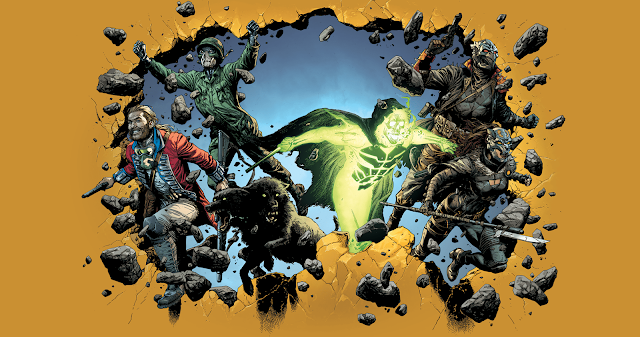The superhero genre has been a dominant force in the comic book industry for decades. While superhero comics can be entertaining and thought-provoking, they can also be quite formulaic. Many superhero comics feature the same basic elements: a white, male protagonist with superpowers who battles evil villains.
In recent years, there has been a growing trend of creator-owned comic book companies that are breaking the superhero stereotype. These companies are giving creators more control over their work and allowing them to tell more diverse and inclusive stories.
One of the ways that creator-owned comic book companies are breaking the superhero stereotype is by featuring more diverse characters. For example, the comic book company Ghost Machine, which was founded by a group of high-profile comic book creators including Francis Manapul, Geoff Johns, Gary Frank, Bryan Hitch, Lamont Magee, Brad Meltzer, Peter J. Tomasi, Maytal Zchut and Jason Fabok, is committed to publishing comics with diverse characters and creators.
Creator-owned comic book companies are also breaking the superhero stereotype by telling more diverse and inclusive stories. The rise of creator-owned comic book companies is a good thing for the comic book industry. These companies are giving creators more control over their work and allowing them to tell more diverse and inclusive stories. This is leading to a new era of creativity and innovation in the comic book industry.
Here are some specific examples of how creator-owned comic book companies are breaking the superhero stereotype:
- Geiger (Ghost Machine): Geiger is an acclaimed series from Geoff Johns and Gary Frank that features an Arab American protagonist. The series is set in a post-apocalyptic world where a young man named Geiger is called upon to save the world from a new threat. The two part follow up to the critically and commercially successful series is due out in November.
- Family Odysseys (Ghost Machine): The Family Odysseys universe centers around The Rocketfellers, which is written by Peter J. Tomasi and drawn by Francis Manapul. The story depicts a 26th century dysfunctional family who when threatened, flee by traveling through time to the year 2024, where they to encounter the strange inhabitants and culture of that era, only to find that the threat they thought they had escaped has followed them.
These are just a few examples of how creator-owned comic book companies are breaking the superhero stereotype. There are many other creator-owned comic book companies that are publishing innovative and diverse comics. I encourage you to check out some of these comics and see for yourself what the new era of comic book creation has to offer.
In addition to the benefits mentioned above, creator-owned comic book companies can also help to make the comic book industry more accessible to new readers. Major publishers often focus on publishing superhero comics, which can be intimidating to new readers who are not familiar with the genre. Creator-owned comic book companies, on the other hand, publish a variety of different genres, including fantasy, science fiction, horror, and mystery. This makes creator-owned comics more accessible to new readers who are looking for something different.
Overall, creator-owned comic book companies are a positive force in the comic book industry. They are giving creators more control over their work, making comic books more accessible to new readers, and breaking the superhero stereotype. I am excited to see what the future holds for creator-owned comics.







No comments:
Post a Comment
“The plot thickens… especially when you comment.” 〜B.J. Burgess